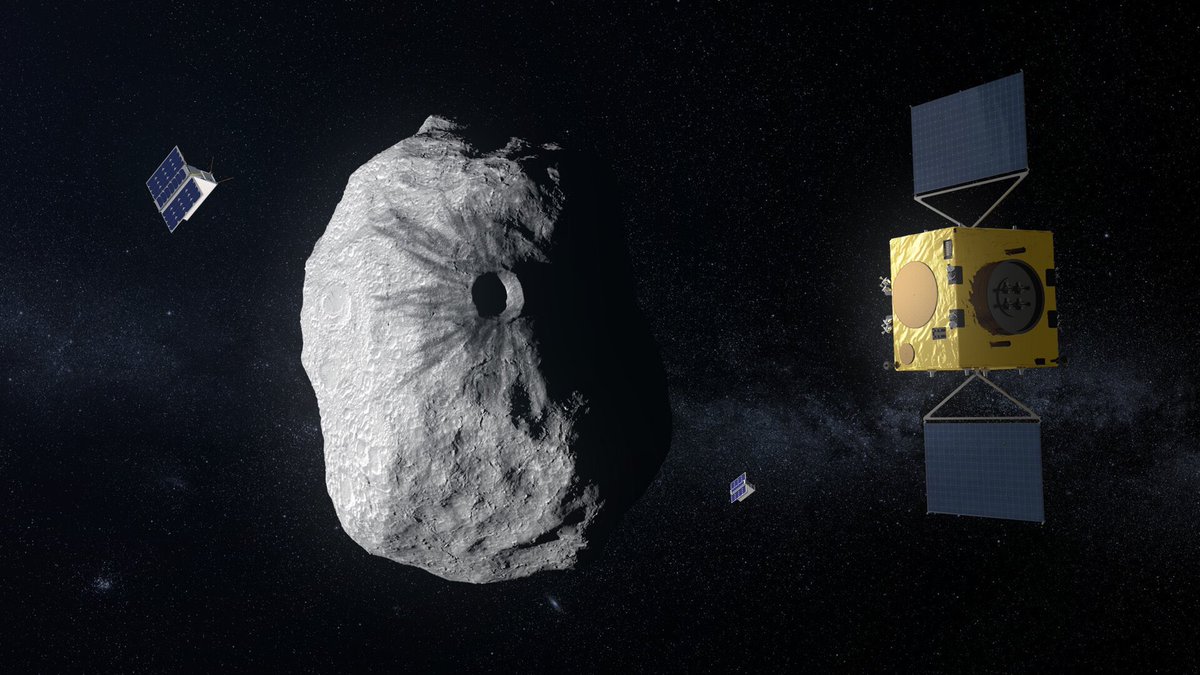
9 years ago - February 15, 2013.
An asteroid fell through the Earth’s atmosphere over the Chelyabinsk Oblast in southern Russia, resulting in a meteor air burst that created sonic booms and a bright flash that rivaled the then-rising Sun. (1/14)
📸: Alex Alishevskikh
An asteroid fell through the Earth’s atmosphere over the Chelyabinsk Oblast in southern Russia, resulting in a meteor air burst that created sonic booms and a bright flash that rivaled the then-rising Sun. (1/14)
📸: Alex Alishevskikh

Analysis and estimates state the object measured in at approximately 20m across and weighed in at around 10,000 tons.
It entered the atmosphere at a shallow 18° angle, with a relative velocity of ~69,000 km/h/42,700 mph - just over 11 miles per second. (2/14)
It entered the atmosphere at a shallow 18° angle, with a relative velocity of ~69,000 km/h/42,700 mph - just over 11 miles per second. (2/14)
The heat and friction of atmospheric entry resulted in the object exploding at a height of 18.5 miles above ground, creating a flash that was confirmed to be brighter than the Sun.
Several small chunks of the meteor survived entry & impacted in areas west of Chelyabinsk. (3/14)
Several small chunks of the meteor survived entry & impacted in areas west of Chelyabinsk. (3/14)
The explosive air burst generated a massive shock wave that blew out glass windows and even damaged buildings in an area of 200 square miles.
Over 1,500 people were injured in the event, mainly due to broken glass. (4/14)
Over 1,500 people were injured in the event, mainly due to broken glass. (4/14)
The air burst itself was said to be equivalent to an explosive yield of around 400-500 kilotons (400,000 - 500,000 tons) of TNT.
That’s approximately 30 times more energy than that released from the “Little Boy” atomic bomb. (5/14)
That’s approximately 30 times more energy than that released from the “Little Boy” atomic bomb. (5/14)
The Chelyabinsk meteor was the largest known natural object to have entered our atmosphere since the Tunguska meteor, which also fell over Russia in 1908, leveling millions of trees in the Siberian wilderness. (6/14)
But the scariest part of the Chelyabinsk meteor?
We didn’t even see it coming.
The asteroid itself had a radiant (origin point) in the sky that put it close to the Sun, meaning it went undetected until atmospheric entry. (7/14)
We didn’t even see it coming.
The asteroid itself had a radiant (origin point) in the sky that put it close to the Sun, meaning it went undetected until atmospheric entry. (7/14)
This event reignited discussions relating to asteroid impact avoidance & planetary protection against hazardous near-Earth objects (NEOs).
A couple years after the event, NASA & ESA agreed to cooperate on a series of missions that would test asteroid deflection. (8/14)
A couple years after the event, NASA & ESA agreed to cooperate on a series of missions that would test asteroid deflection. (8/14)
In November 2021, the first of these missions, DART - the Double Asteroid Redirection Test - successfully launched atop a SpaceX Falcon 9 rocket from Vandenberg.
The destination for DART is the asteroid Didymos and its moon, Dimorphos. (9/14)
📸: @thejackbeyer/@NASA

The destination for DART is the asteroid Didymos and its moon, Dimorphos. (9/14)
📸: @thejackbeyer/@NASA


The DART spacecraft will deliberately crash into Dimorphos in September of this year, in an attempt to alter its orbit around Didymos and assess the future potential of using a spacecraft to deflect an asteroid on a collision course with Earth. (10/14)
📸: @NASA
📸: @NASA

By at least 2024, ESA will launch a follow-on mission to DART, known as Hera.
The spacecraft will measure the outcome of DART’s impact with Dimorphos, such as changes in the orbits of the Didymos binary system and the volume of the moon itself. (11/14)
📸: @esa
The spacecraft will measure the outcome of DART’s impact with Dimorphos, such as changes in the orbits of the Didymos binary system and the volume of the moon itself. (11/14)
📸: @esa

The idea of using spacecraft to redirect incoming asteroids used to be considered science fiction. Now, with DART and Hera, it can be a reality.
But it’s important to remember that these missions are the response to events like that which occurred back in 2013. (12/14)
But it’s important to remember that these missions are the response to events like that which occurred back in 2013. (12/14)
It’s also a reminder that Earth is still fragile, and that it is not yet immune to the threat of impact. Therefore, we should support staving off that threat by any means possible.
We only have this one planet for now - let’s protect it for as long as possible. (13/14)
We only have this one planet for now - let’s protect it for as long as possible. (13/14)
So remember the Chelyabinsk meteor on this day. Let’s make sure we continue to keep this planet safe. (END)
• • •
Missing some Tweet in this thread? You can try to
force a refresh








